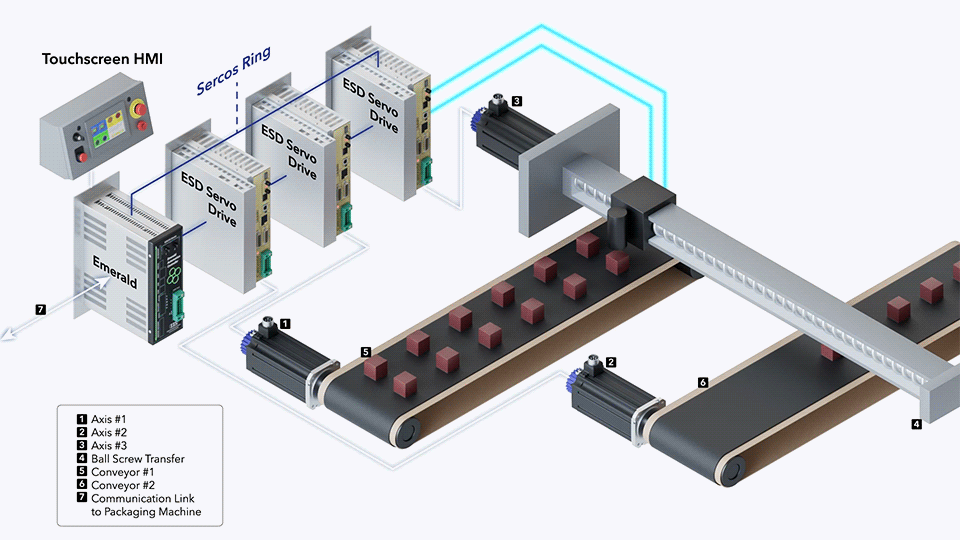
A machine places completed product on a conveyor in a five-abreast configuration. Another downstream packaging machine requires that the product be two, three, four, or five abreast depending on the count of the completed package.
SOLUTION
Construct a system of two conveyors, a transfer slide and lift/gripper mechanism. Equip each conveyor and ball screw transfer mechanism with the Emerald Series SERCOS servo packages controlled by the EMC-2100 Emerald automation controller. Establish a communication link to the packaging machine so that the package count can be transferred to the Emerald automation controller.
An application program developed with the Emerald Motion Language (EML) PC software creates the following sequence:
- Conveyor #1 indexes the product to be in alignment with the transfer slide and vertical air cylinder lift/gripper mechanism.
- The ball screw transfer mechanism moves to a position above a product on conveyor #1.
- The air cylinder lift mechanism extends, grips the product and retracts.
- The transfer mechanism moves to a position above conveyor #2.
- The air cylinder lift mechanism extends, releases the product and retracts.
- The transfer mechanism moves to a position above the second product on conveyor #1.
- The air cylinder lift mechanism extends, grips the product and retracts.
- The transfer mechanism moves to an empty position above conveyor #2.
- The air cylinder lift mechanism extends, releases the product and retracts.
- This process is repeated with conveyor #1 and conveyor #2 indexing to new locations in the appropriate sequence to successfully complete the five (5) to two (2) reorganization of the product.
ADDITIONAL APPLICATION FEATURES:
- Polling of the packaging machine to determine the required organization of the product on conveyor #2, i.e. 5->2, 5->3 etc.
- Sequence and timing of the air cylinders for the lift/gripper are precisely controlled.
- A sensor in the gripper mechanism is used to detect loss of product.
- A special sequence recovers from loss of product on conveyor #1 to guarantee the proper product count on conveyor #2.
- Minimum jerk motion profiles to prevent product tip over.
- Synchronization of conveyor movements.


